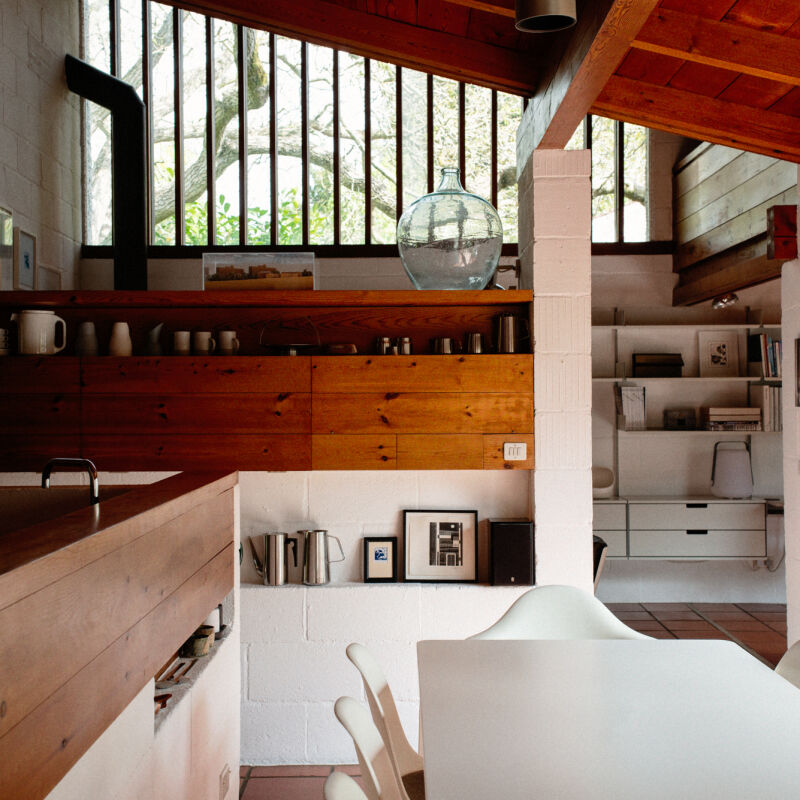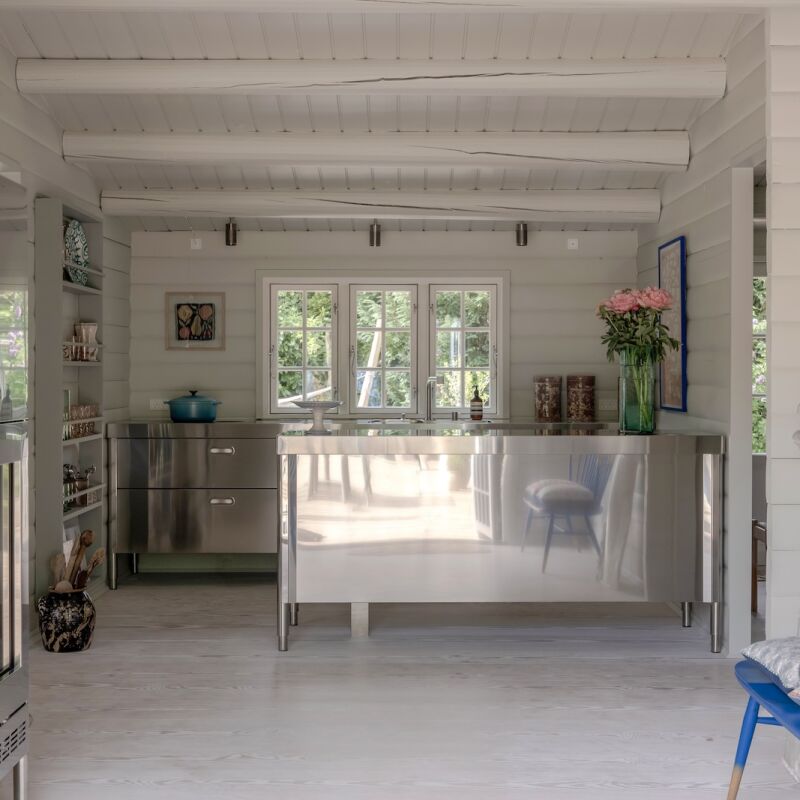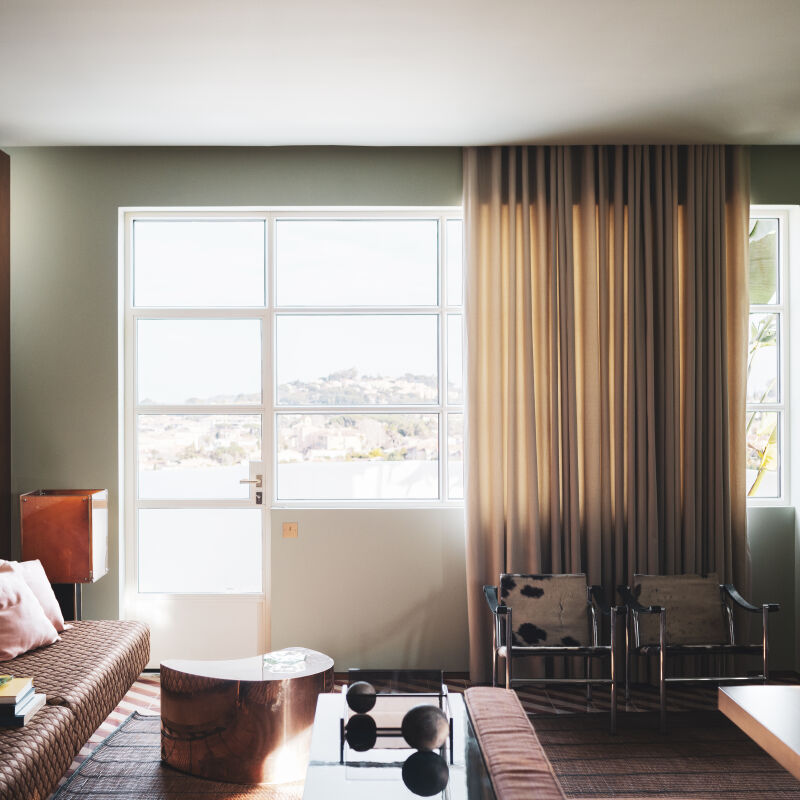
When my boyfriend, Matt, and I booked a flight to Stockholm for New Year’s last year—trying to escape what I’ve always considered the dreary and depressing few days after the holidays—we somehow didn’t realize it would be dark, very dark, that far north in the middle of winter.
We learned, the first day. We took a train from the airport to the center of the city, and arrived around 2:30 pm, just as the sun was setting and the golden lights of the city were starting to flick on and a light snow was beginning to fall. For most of our visit, it was night—pitch black until 8:30 in the morning, the daylight starting to dim after lunch—and it was a strange nocturnal week we spent, between the long stretches of darkness and the oddness of jet lag, plus, for me a feverish flu I caught on the plane ride over. In the last days of the year, the city was pin-drop quiet (the absence of noise made me realize how much ambient noise there is, always, here in the US; in Stockholm, even restaurants had no music) and frostily cold, and we spent our days walking the streets of Kungsholmen and Gamla Stan bundled head to toe, ducking into cafes and pastry shops every hour to warm up. We went to sleep at nine—which felt, disorientingly, like the middle of the night. Sometimes we woke up in the wee hours, at two in the morning, made tea, then slept again, an old-fashioned biphasic sleep.
Most mornings we bundled up in two sweaters each, scarves, and hats and went to a nearby bakery for coffee and a cardamom bun. There, on our first gray morning—my first time seeing Stockholm in the daylight—I was delighted to see a small, flat candle flickering outside the bakery, right on the sidewalk. Inside, taper candles burned in brass candlesticks, tucked between the breads and rolls and pastries.

I soon discovered there were lit candles everywhere, unlike anything I’ve ever seen: a storybook city in marzipan hues at the top of the world, dark and snowy, and lit by flickering light. There were candles outside every shop, lining the streets, flickering in the doorways. Candles at lunch. Candles at dinner. There were candles in small brass holders on our breakfast trays one morning. There were candles to last the long stretch from nightfall to sleep, but also candles in the few spare hours of daylight. We bought a few plain white ones at a local market and took to lighting them ourselves in our Airbnb at night while we played games or read.
There was something old-fashioned about it, the idea of retreating indoors with the dark, living more by the sun, and it seemed to me the people of Stockholm had figured out a way to bide their time in the dark—not by plugging in lamps or flipping switches to add as much brightness as possible, but by something smaller and more intimate that, in its way, celebrates the darkness. (Margot reminded me that when we toured the Soho flat of Danish entrepreneur and model Camilla Vest, she told us she lights candles at breakfast and throughout the day. “It’s a Scandi thing,” she says.)

The real wonder came the last night, when we traveled to Vaxholm, a tiny fishing village on an island just north of the city, adrift in the archipelago. We arrived to freshly fallen snow and ice on the water and walked around the town as the sun set. Later, while we warmed up with hot chocolate in a cafe, the lights flickered and went out, first briefly, then again, and again. The power, we learned, had gone out in the whole town, and for long, quiet stretches the cafe was completely dark, lit only by candles. The lights stayed out the rest of the night, and we huddled under blankets by candlelight and watched the snow fall on the dark harbor. The restaurant brought around Champagne. It was pure, simple magic. It reminded me of times we lost power for days at a time when I was a kid, and we’d retreat, for a while, to a slower, quieter century, fistfuls of taper candles lit in jam jars on the mantel, reading in the dark.
The next day we flew home with suitcases full of Swedish goods for the apartment we were about to move into together: Iris Hantverk brushes of every sort and thickly woven dishcloths and a sheepskin. At one shop, I’d bought a pair of pale taper candles, and when we moved into our new place I fit one into a tiny glass holder. We got into the habit of lighting it for every dinner, making a bit of ceremony out of what is usually something hastily assembled and eaten at our tiny Ikea dining table.

One year later, finally settled into our apartment, I find myself these cold January days thinking of last year in Stockholm. We always light a candle at dinner, and some days I light one when we wake up and let it burn on the table next to me while I work at home. Sometimes I let it burn all day, so long as I’m there to watch it.
There’s something comforting and somehow hopeful about it: a little flickering heart at the center of a dark and quiet winter. Having a candle going in the morning while we drink our coffee, or on the table while I send emails and write, adds, somehow, some specialness to the routine of the day and some brightness to the dim afternoons. Why light a candle when we have electricity? I realize it’s a bit like the way my four aunts light candles, lots of them, for even a weeknight dinner—a bit of just-because graciousness inherited from their mother, something I could channel more in my life.
Going into another year, another winter, my resolution is: more candles. More candles at the breakfast table, more light in winter, more settling in, more slow mornings, more romance in design, more making more of small moments.
Want to join me? Start with one simple taper.
Five to Buy





More to inspire a new candlelight routine:
Old-Fashioned Iron Candle Holders for Long Winter’s Nights
Object of Desire: A Self-Extinguishing Candlestick from Hay
Sculptural Beeswax Candles from a Brooklyn Potter




Have a Question or Comment About This Post?
Join the conversation (7)